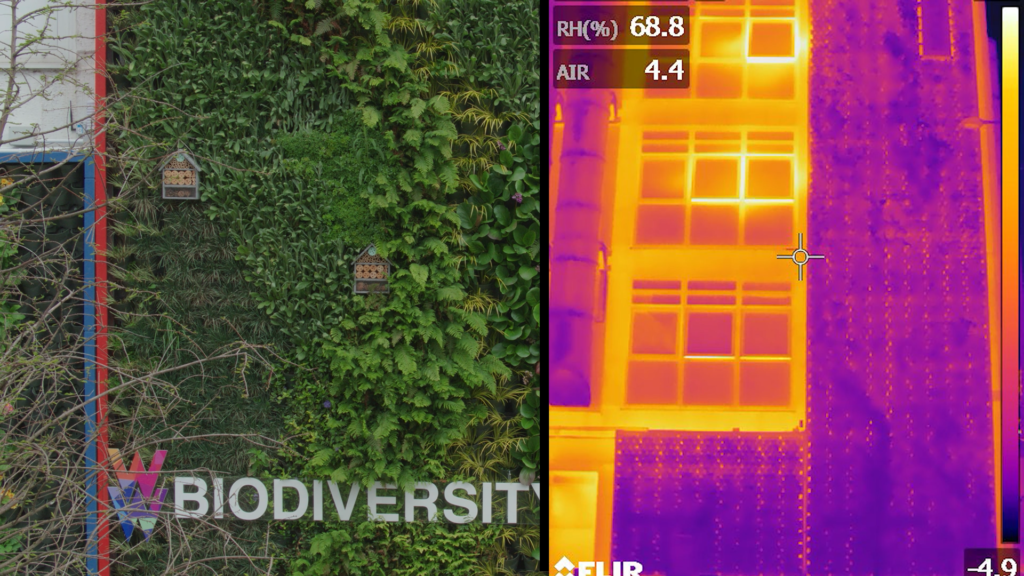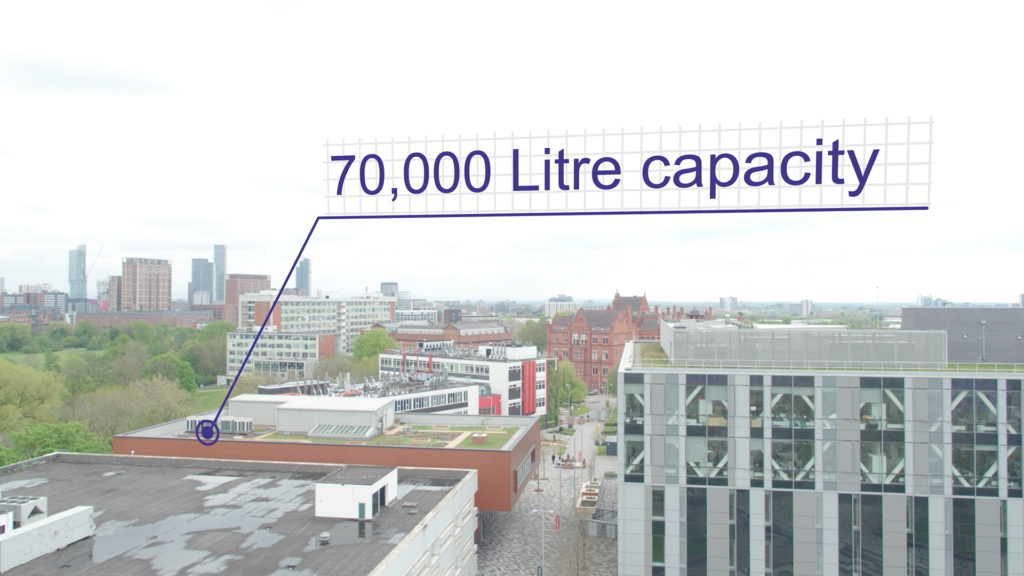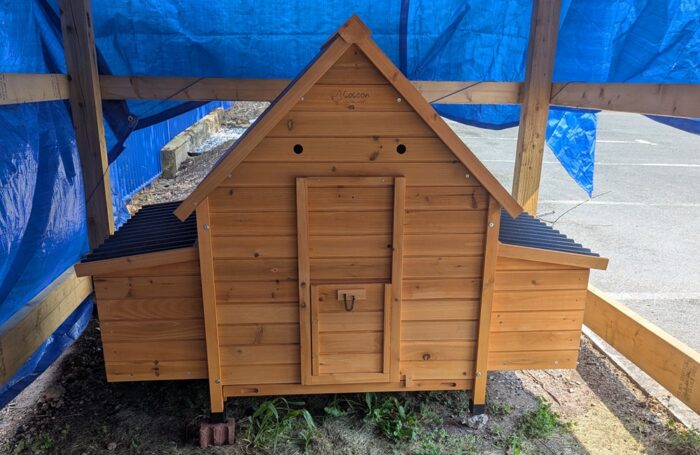Urban nature-based solutions like green walls and roofs, sustainable drainage systems and street trees have the potential to provide around 30% of the adaptation needed to protect our towns and cities from increased rainfall, flooding and heatwaves by 2030. They can also increase property value, provide insulation, improve air quality, capture carbon, enhance health and well-being and help create healthy, vibrant, active green towns and cities.
Since 2019, the IGNITION project has explored nature-based solutions in more detail to provide a robust case for how, why and where this needs to be done in Greater Manchester, alongside insight into how our approach could be applied elsewhere. Central to this has been the Living Lab at the University of Salford, where retrofit installation has showcased a variety of integrated nature-based solution climate mitigation measures, including a green-blue roof, living wall, sustainable drainage trees and rain garden. All of these elements are connected via a single central monitoring system, which captures data in real time and allows for the redistribution of rainwater as required around the lab.
The evidence we have gathered on the impact of these nature-based solutions has already helped shape projects. So what are some of the key benefits we’ve identified at the Living Lab?
Insulating buildings
Living walls and roofs not only provide a haven for wildlife, but they can also improve insulation and have the potential to lower bills as a result.
The green wall is a central, very visible part of the Living Lab. Throughout the project we have been able to monitor the impact it has been having on building temperature. Thermal imaging of the building envelope has shown around 6 degrees difference in temperature between parts of the building with a green wall and those without.

External temperature has been impacted upon too, with the average external temperature being around 2 degrees higher after the green wall was installed, based on data taken in the autumn.
This demonstrates the impact that green infrastructure can have on building temperature if deployed at scale. With rising fuel costs and the need to mitigate against climate change in mind, the potential green walls have for improving insultation is clear.
Capturing and reusing water
Sustainable drainage systems (SuDS) enable the management of rainwater in a way that more closely mimics nature, reducing the strain on existing sewage networks and reducing local flood risk.
At the Living Lab, SuDS were installed with a capture capacity of 70,000 litres. With the SuDS linked to other nature-based solutions at the lab, we have been able to reuse captured rainwater to ensure that other elements like the green wall have been able to thrive. Longer term, this has the potential to reduce wastewater bills too, given less water is lost into sewage systems.
It is also worth noting that the impact of SuDS at the Living Lab has reached further than the lab itself. Surface water has been captured from an area that is ten times bigger than the Living Lab’s own footprint, demonstrating how the benefits of installing nature-based solutions can stretch far beyond the solution itself.

Improving biodiversity
Nature and biodiversity is in decline across the country and globally, to the extent that Greater Manchester has declared a biodiversity emergency. There is a clear need to recover and restore biodiversity, reverse habitat loss and explore what more can be done, and in urban settings nature-based solutions can have a big role to play.
The Living Lab’s 185m green wall is made up of over 5,800 individual plants and over 50 unique species. These were chosen with variety in mind and included edibles and pollinator-friendly plants, all to help maximise the support that the wall provides to biodiversity. The performance of the wall being monitored in real time across the seasons has also allowed us to identify when different species of plant perform best, making changes as required to benefit both the green infrastructure itself and the biodiversity of the area. The lab has also explored where different plant species work best, with test beds on the Living Lab roof and rain garden providing valuable insight into optimal plant use.

Driving engagement
Throughout the IGNITION project, the importance of engaging stakeholders has been crystal clear. Our multi-partner project has worked with a wide range of audiences to help better understand the roles we can all play in making things happen, from local authorities and policy makers to businesses and investors. And we have sought to involve the citizens who will actually live alongside nature-based solutions, who have been able to offer unparalleled local insight and support, as well as being long-term custodians for their local environment.
Bringing nature-based solutions to life for these audience groups is essential, and the Living Lab has demonstrated the value of having NBS on site to drive engagement forward:
- Over 600 people engaged on tours
- 6.7k views of virtual tour online
- 24.7k virtual tour engagements
By utilising multiple channels of engagement from in-person to virtual – YouTube videos, a standalone website, newsletter, virtual content for COP26 – IGNITION has demonstrated the value that can be extracted from having a tangible showcase for nature-based solutions.
This engagement has led to opportunities to further nature-based solutions across Greater Manchester, with the team having been approached by a number of companies for collaboration on green infrastructure installation on new build projects in the city region.

Influencing future research
IGNITION has been an innovation project at heart, and what comes after the project was always going to be just as important as the project itself. It’s now down to local authorities, landowners, developers, communities and other groups to take the myriad insights, tools and resources from the project and make use of them throughout their work.
The Living Lab has already seen this happening in real time, with an extra green infrastructure construction project secured via the Higher Education Innovation Fund and production of a comprehensive lessons learnt log for retrofit GI construction in urban spaces. Since launch, the Living Lab has also been part of 13 taught courses and student projects at the University of Salford, further influencing academic thinking in this area, as well has having been shortlisted for two industry awards.
The Living Lab’s data dashboard can be accessed here. For more insight into nature-based solutions, including evidence, tools and resources, visit the IGNITION website.



